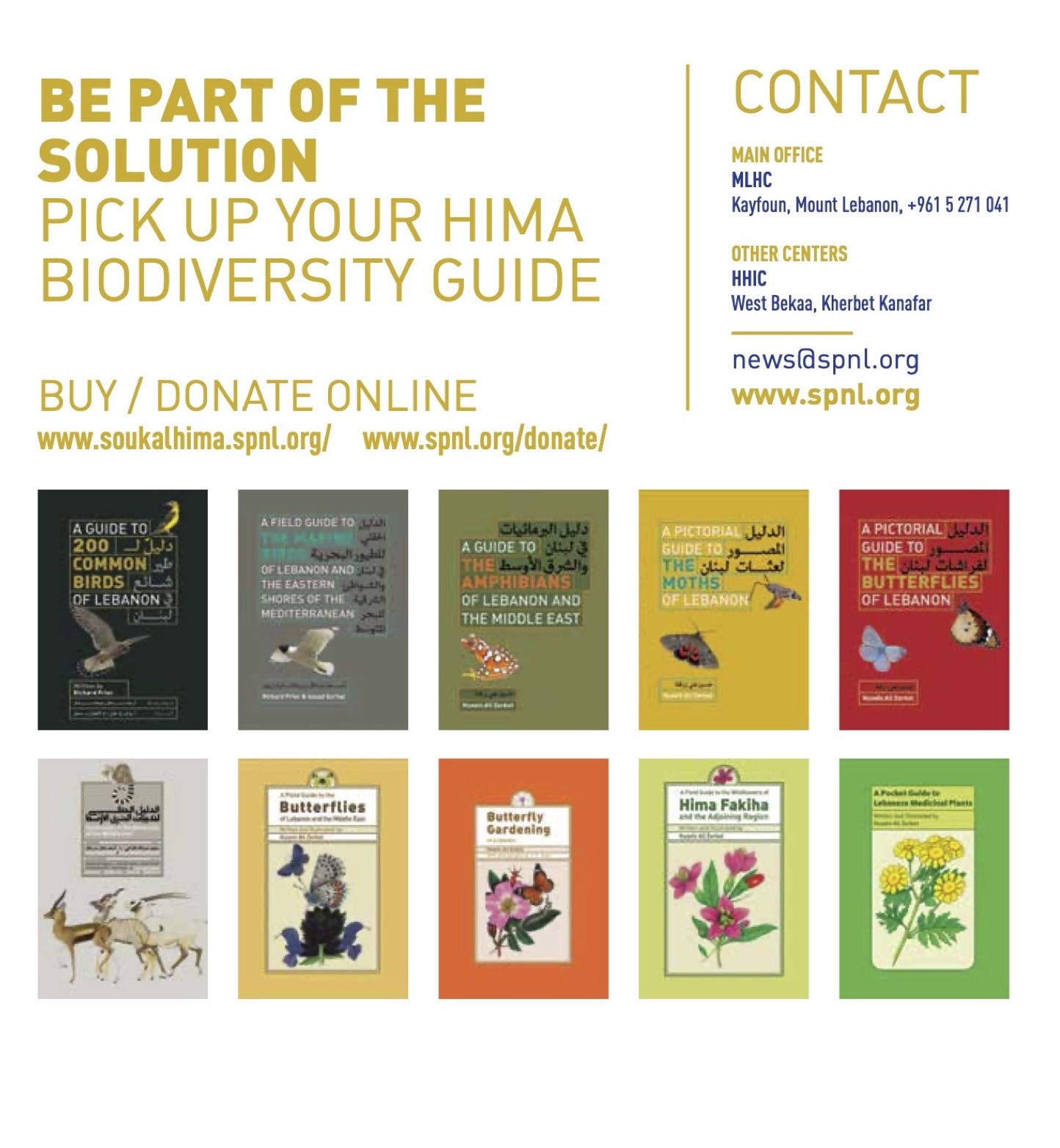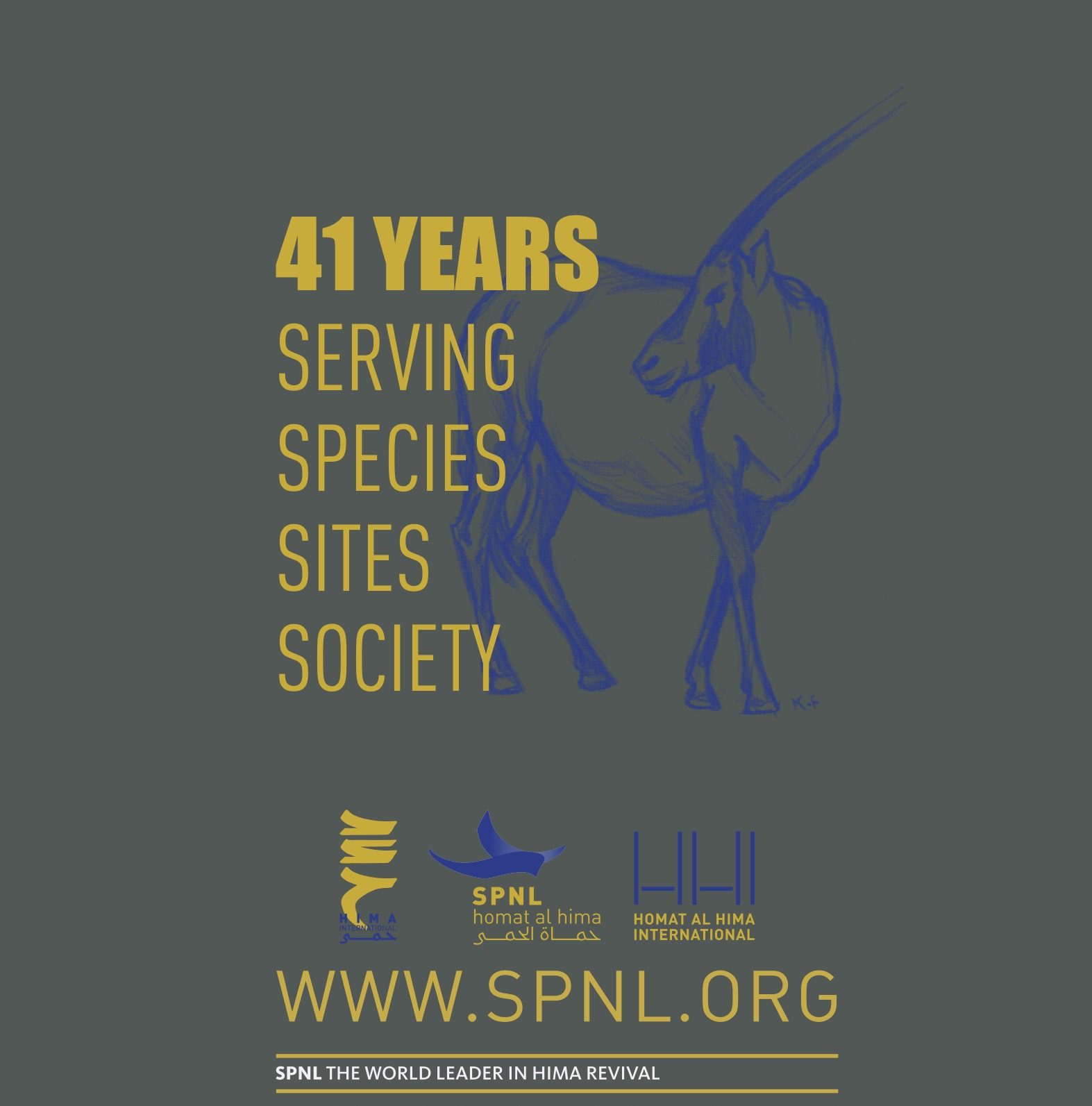By Assad Serhal, Director General of the Society for the Protection of Nature in Lebanon (SPNL), Founder and Chairman of Homat Al Hima International (HHI), and Birdlife Chairman Middle East Region Partnership
(Al Hima Magazine 6th Edition)
“Tell her, if you come to her sanctuary,
That I have died in love, sacrificed for her.
And mention me to her with all that is beautiful,
Perhaps she will weep for me, perhaps she will.”
— Beshara al-Khoury, known as al-Akhtal al-Saghir (1885–1968), a Lebanese poet also nicknamed the Poet of Love and Passion and the Poet of Youth and Beauty.
In December 2022, more than 190 countries adopted the Kunming–Montreal Global Biodiversity Framework (also known as the Biodiversity Plan), an international commitment to better protect our planet, ensuring the survival of us all. The framework includes 23 targets to reverse the loss of habitats and species. Target 3, known as the 30×30 target, calls for the effective protection and management of 30% of terrestrial, inland water, coastal, and marine areas in the world by 2030.
Protected areas designated by states play a critical role, but it is very important to recognize Other Effective Area-Based Conservation Measures (OECMs), including models led by local communities. One such model is the Hima system, a traditional community-based approach common in West Asia and North Africa.
How do Hima legislations align with the standards of the International Union for Conservation of Nature (IUCN) for protected areas, ensuring their official recognition under the 30×30 target?
The Hima, which means “protected area,” is an environmental practice led by the local community for centuries and regulates the sustainable use of natural resources. In recent years, many Middle Eastern governments and environmental organizations have sought to formalize the Hima within national legal frameworks, recognizing its environmental, social, and cultural value.
IUCN Resolution WCC 2012 Res 092 encourages community management of resources, emphasizing legal recognition, governance rights, and adaptive management. The resolution recognizes the Hima as a legitimate system of environmental protection, alongside traditional practices such as Agdal in Morocco and Gorukh in Mongolia.
Lebanon has taken important steps to integrate the Hima into its legal framework through the Law on Protected Areas No. 130 of 2019, which classifies the Hima as one of four main categories of protected areas in Lebanon. This law strengthens the alignment of the Hima with IUCN protected area standards in the following ways:
-
Long-term commitment to protection
-
The law grants legal protection to the Hima, ensuring the sustainable conservation of biodiversity.
-
It formalizes it as a designated protected area, which strengthens its legal status and ensures its contribution to conservation goals.
-
Unlike informal Hima arrangements, the law establishes clear mechanisms for governance and management, reducing the risks of land-use changes that undermine conservation efforts.
-
-
Effective governance and management
-
The law establishes a structured governance framework, including administrative committees that oversee conservation activities in each Hima.
-
By allowing public and private properties to be designated as protected areas under contractual agreements, the law provides greater flexibility in governance, ensuring the participation of local communities in management.
-
-
Sustainable use of natural resources
-
The law permits the sustainable use of resources within the Hima, provided that it is consistent with conservation objectives.
-
This aligns with IUCN’s recognition that sustainable use, when well-regulated, contributes to achieving conservation goals.
-
In addition, any activities permitted within the Hima require an Environmental Impact Assessment (EIA) or an Initial Environmental Examination (IEE), which reinforces a scientific approach to sustainable use.
-
-
Recognition of the Hima in national and international frameworks
-
Through the legal classification of the Hima as a category of protected areas, Lebanon strengthened its position to obtain international recognition under IUCN and the 30×30 framework.
-
The law enables public and private bodies, including international institutions, to fund Hima conservation initiatives, ensuring financial sustainability.
-
To further strengthen the official recognition of the Hima as a contributor to the 30×30 target, the following measures are recommended:
-
Expanding legal protection and clarity: While Law No. 130 officially recognizes the Hima, additional regulations are necessary to define governance and monitoring frameworks so that they align more fully with IUCN standards.
-
Improving documentation and monitoring: Establishing unified systems for monitoring conservation and reporting will enhance recognition of the Hima as a natural protected area.
-
Increasing international advocacy: Working with IUCN and multilateral environmental agreements will help ensure the inclusion of the Hima in global conservation reports.
Additional improvements in monitoring, financing, and international recognition would consolidate the Hima as a key contributor to achieving global biodiversity goals within the framework and the 30×30 target.






